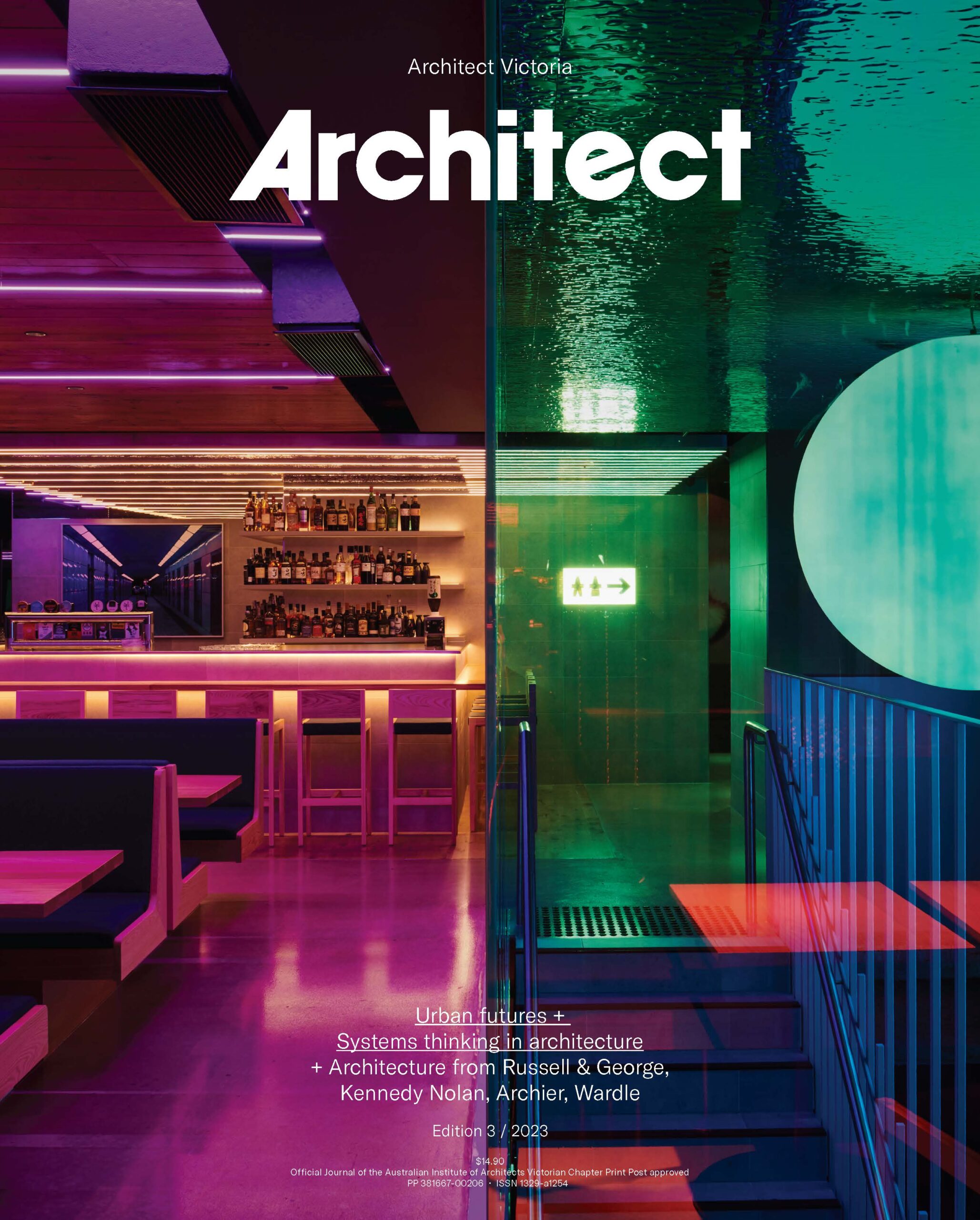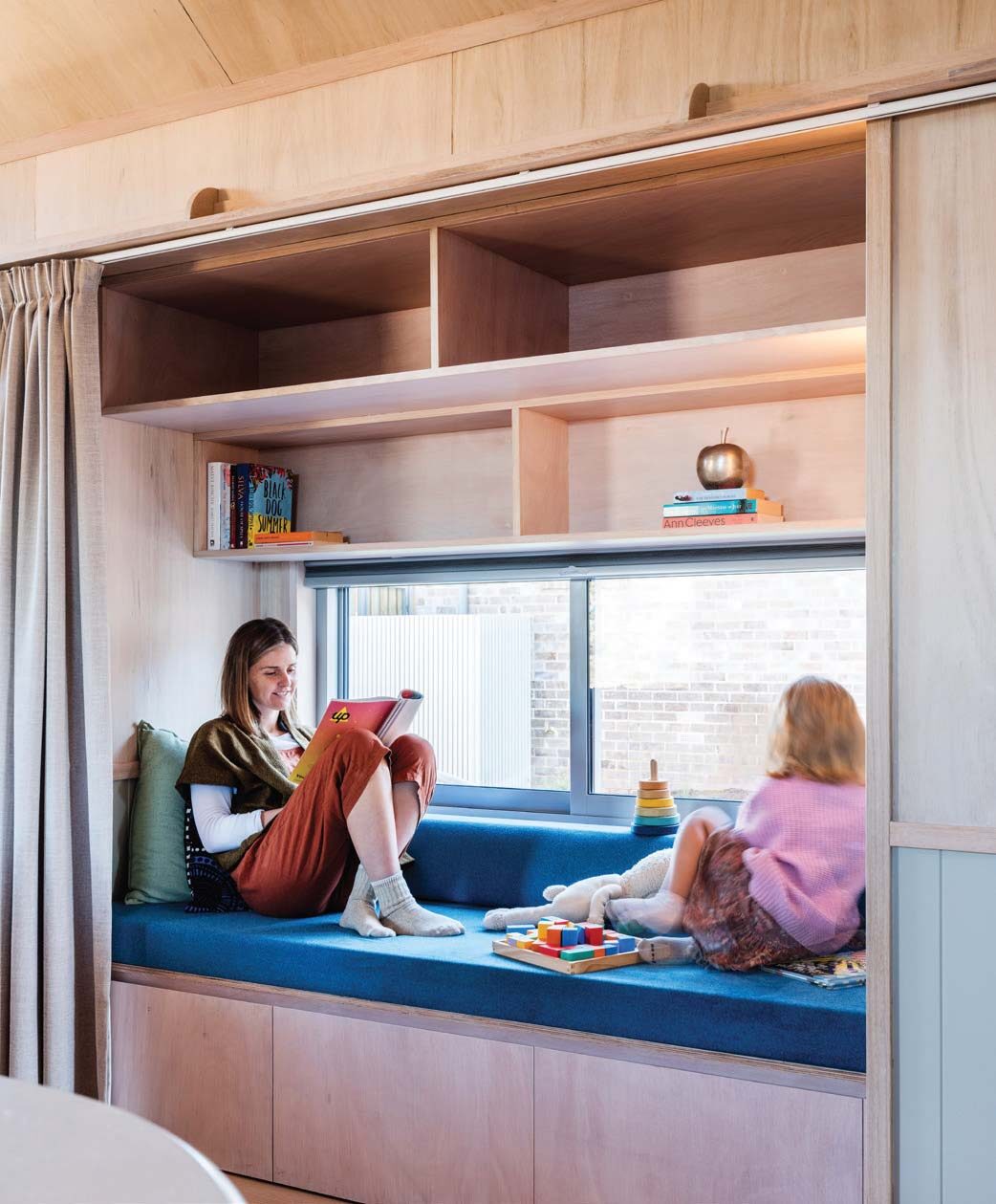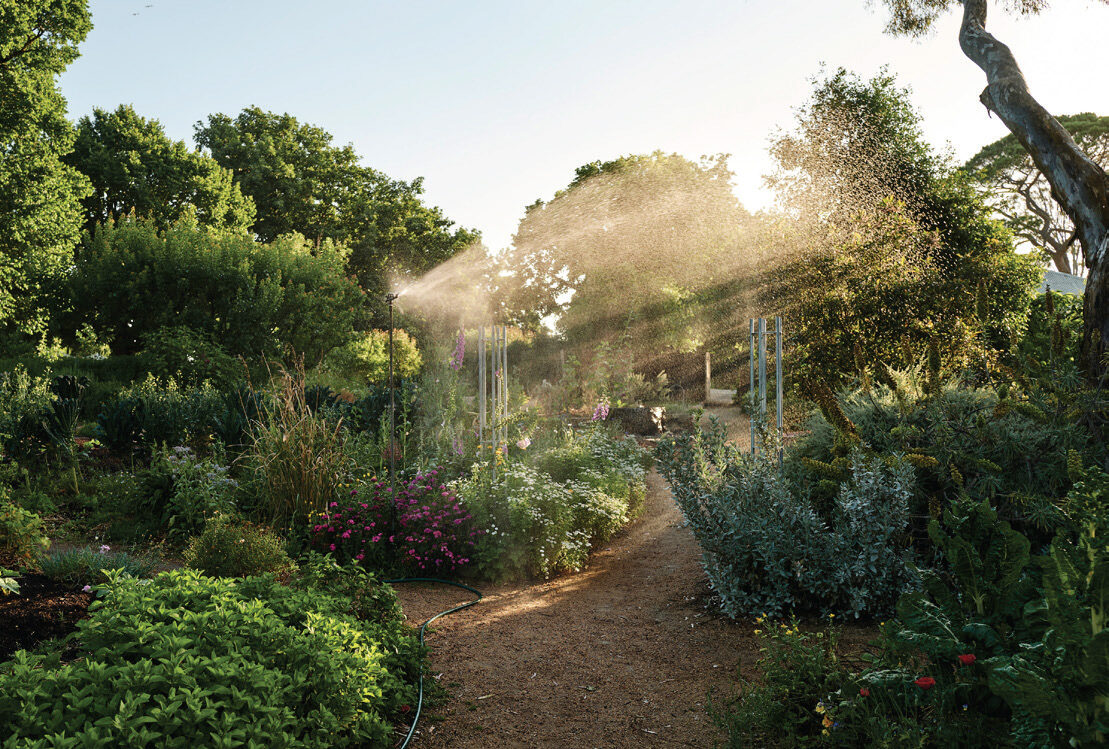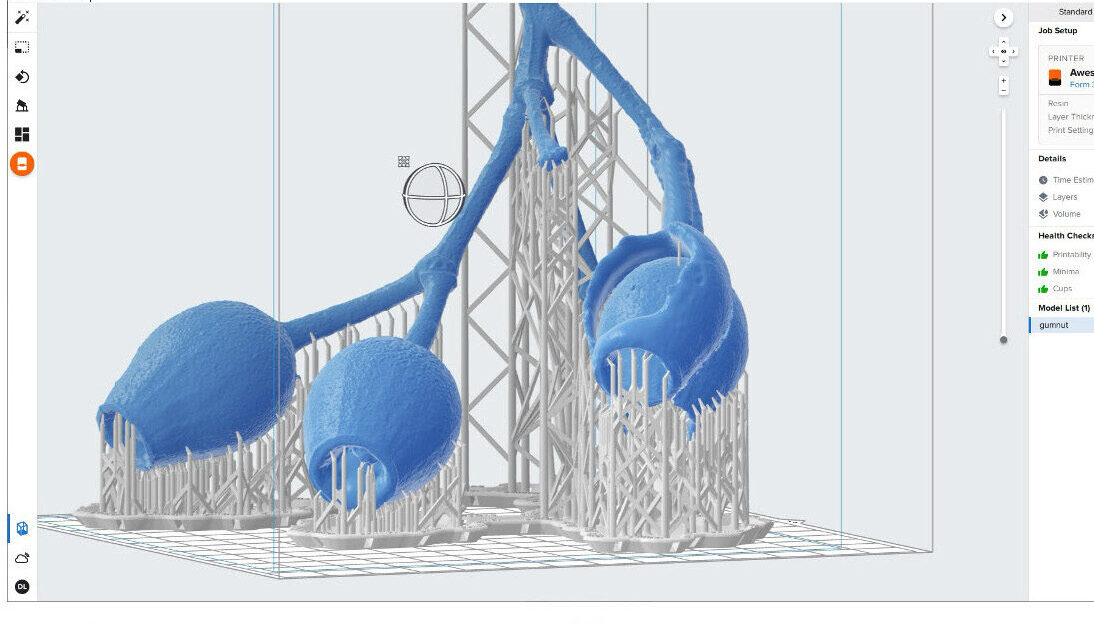What does the future city look like? Next question
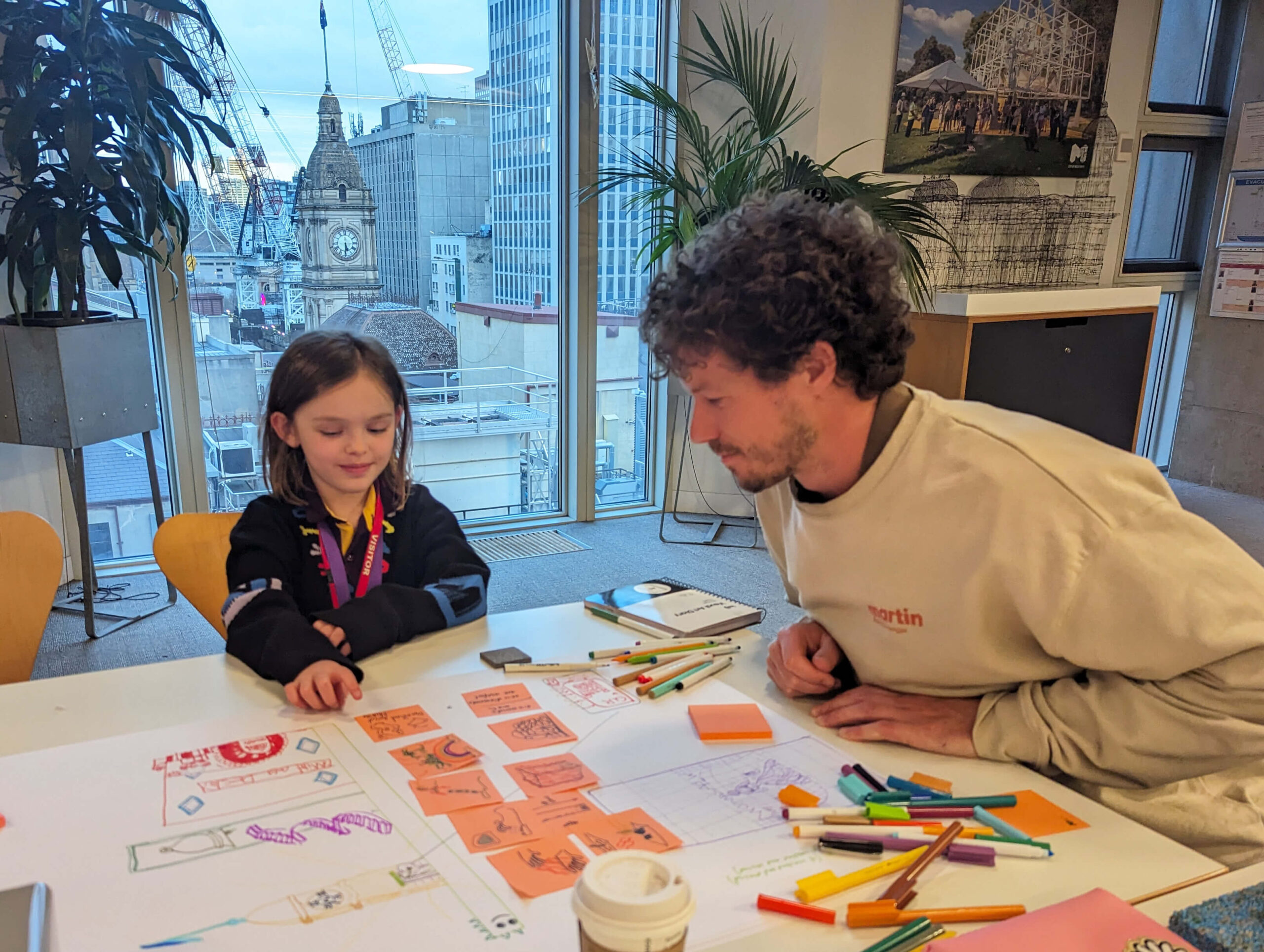
Artist, engineer and self-described ‘lazy anthropologist’ Mike Hewson, has created extraordinary urban places for our smallest citizens. Collaboration and iteration are core to his design process. St Peters Fences sculpture park in Sydney – which emerged from a drawing exercise with local school children – exemplifies an ability to capture the whimsical and chaotic imagination of young minds.
Hewson’s rejection of mundane contemporary public spaces and his curiosity of everyday objects, reveal an unconventional perspective toward the built environment. Pushing beyond design standards and ridiculing over-regulation, Hewson’s projects often provoke controversy and debate among the aggrieved grown-ups but are immediately understood by children.
Children are our greatest critics – deeply honest, opinionated and mostly unbothered by the impending fears we have towards the future. Embedding kid’s perspectives in the planning of cities is rarely executed well; however, it can enable resilience, social connections, and imaginative risktaking. Hewson believes a great deal of public space is designed in a manner that lacks generosity toward the people who use it. “Alongside the responsible-duty-of-care-risk-management approach design, why not equally assume that people are smart, capable and able to navigate and comprehend novel and challenging environments?”
In a conversation with Sunday Hyde, Hewson explored the possibilities for the future city through the eyes of an eight-year-old. Through generative illustration, what became apparent was a fundamental disinterest in the topic of the future, emphasising the importance of living in the present. This reflection serves as a reminder that our greatest legacy may be our ability to fully appreciate our complex world as it exists today.
Ultimately, Hewson’s work and Sunday’s ideas suggest that the future city may not be drastically different from the present. Instead, it may involve the continuous evolution and adaptation of our surroundings, with the inclusion of different perspectives, all rooted in the enduring essence of the present moment.
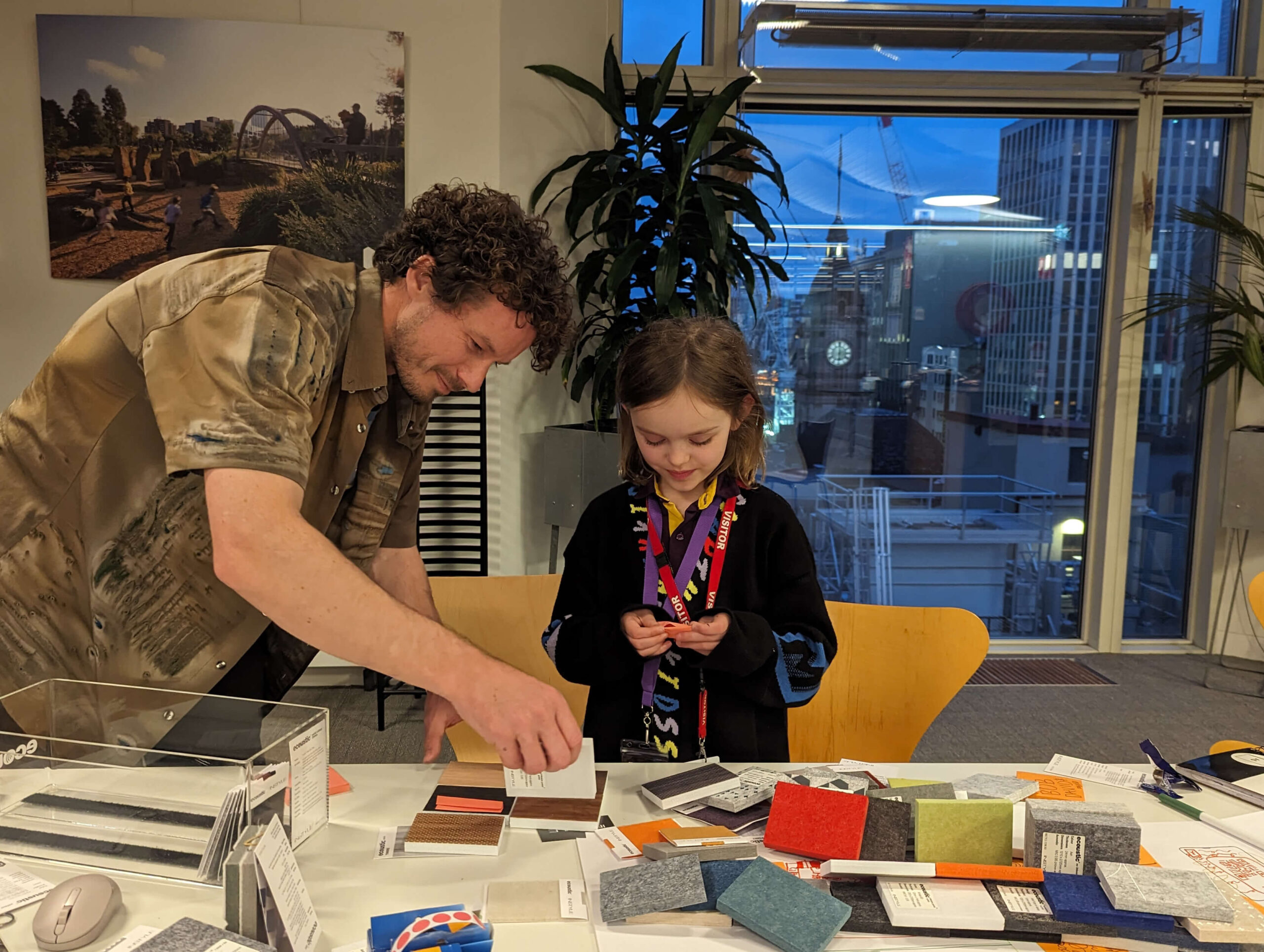
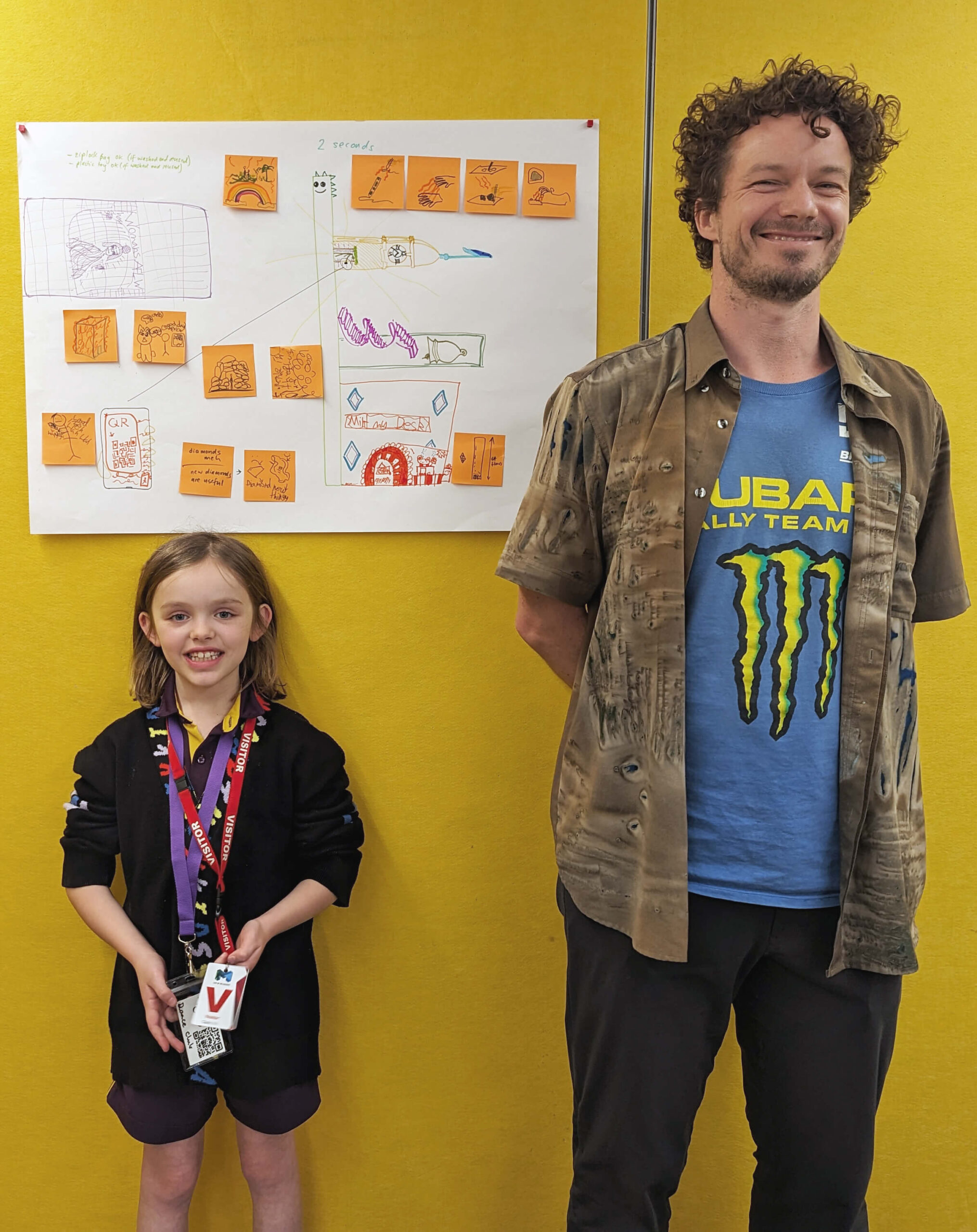
Mike Hewson: How far away is the future?
Sunday Hyde: In two seconds… a millisecond!
MH: Alright, two seconds, that’s pretty close. So, it is not sometime in the future? It is, I guess, two seconds away?
SH: Two seconds is in the future! Right now, I am speaking into the future.
MH: That’s true. So, if we are already in the future we can draw whatever we want. Should we just draw Melbourne then?
SH: Yep. I can get inspiration from that. We can draw the types of stores we could have. But should we draw what there already is or what there should be?
MH: This is a good question. Do you think we already have what we should have?
SH: Let’s draw just a little bit of change and like, in the middle.
MH: What’s happening in your store and how is this future store different from a store?
SH: I’m not sure what type of store. I’m just drawing the outside. All of the essentials. Just everything that you can see on the outside. It’s not really futuristic. It just has more stuff that you can buy and more electronic signs.
MH: While drawing the Melbourne Town Hall clocktower, visible from the nearby window, do you reckon they will turn clocks into stores?
SH: Maybe it could have a door with a sci-fi keycard so you can open it, so people who have the keycard can ring the bell. It could be a little bit of a tablet, like an iPhone mini. Then you can get it onto the right app because it could have free apps. Maybe it could be a QR Code.
MH: What is inside of the building?
SH: You go up a flight of stairs, little curly stairs, you know? And then there will be the big bell and you ring it, just like a normal old-fashioned bell. Nothing too fancy.
MH: So, it is not a sci-fi bell, it is just a casual bell.
SH: A bell that you can see every day.
MH: Okay. Are there old things in the future too? We don’t hate old things.
SH: Yes, we still keep old things now. We still keep some of the old buildings like my house is a really old building. One of the fancy ones.
MH: Yeah, that sounds about right. Architects like fancy buildings (disclaimer: Sunday’s dad is an architect). Do you think there will be architects in the future?
SH: Definitely.
MH: Why wouldn’t computers just design it all?
SH: Artificial intelligence is not always very intelligent.
MH: Oh yeah? Is someone going stop it from being intelligent? Like other architects?
SH: I can’t predict the future. I’ve only listened to Harry Potter where they predict the future. I’ve never predicted the future.
MH: But we are guessing right now?
SH: Yeah. A good old guess.
MH: Are any of your friends worried about the future? Do any of your friends say “oh when I’m older, it is going to be all broken”?
SH: No
MH: So, do you think the world in the future is going to be a good place?
SH: Yes
MH: So, what you’re saying is, the future is not that different?
SH: Yeah. When you’re in the future, you just notice all the differences.
MH: Now you are going to tell me ideas for the future. They don’t have to be different from now but they can be and I’m going to draw them.
SH: A 68-floor detailed apartment.
A sci-fi computer that has a little force so you can see it and tap the air and it will put the code in.
MH: Woah! Yep, that sounds like the future.
SH: Textas that can have a machine stuck to it and then it can draw automatically for you when you say the words. Theme parks that have rides where you float.
Landscapes that look like you’re walking on the rainbow.
When you have to write your name down, you need rocks on the paper and then trace the rocks. And then the paper will get a little signal to a computer and then you just type in what you want to be written.
There will be buildings made of fluff.
I have an idea from a dream. A little museum for kids that has about a million pillows and a pillow slide. Everything you could hope for is made out of pillows. It’s not really a museum, it’s just like a fun park where there’s lots of pillows.
Diamonds are now worth less because they found a new type of thing that is worth more than diamonds. Something that’s really valuable.
MH: And what do you do with it?
SH: You can make clothes out of it. You can dye your hair with it. You can make toys out of it. You do anything with it and you can keep it as a treasured possession.
MH: Do you think in 100 years buildings will look the same?
SH: Yes, they will all have bricks in them.
MH: All right, we’ve got a pretty clear snapshot for the future
Mike Hewson is a visual artist with a background in structural engineering and heavy-civil construction. He is has completed five large-scale public art commissions in Australia, many of them are sculpture park/playgrounds. Hewson received a Bachelor of Engineering (Hons) from the University of Canterbury, New Zealand in 2007 and a Master of Fine Arts from Columbia University, New York in 2016.
Sunday Hyde was born in London and now lives in Melbourne. She met Mike Hewson at a workshop at MPavilion, where she led a design team to create a giant tower in the shape of a Frank Green water bottle.
